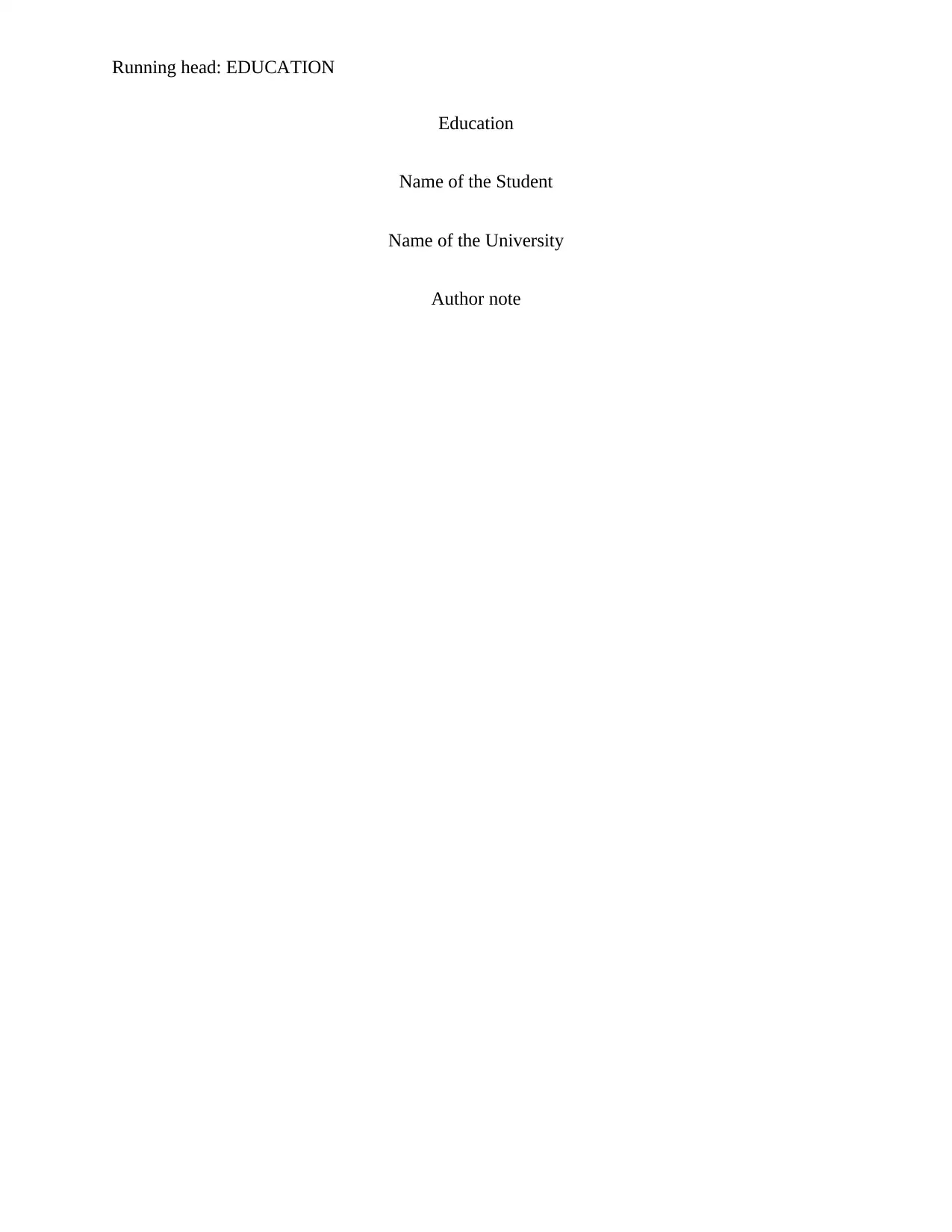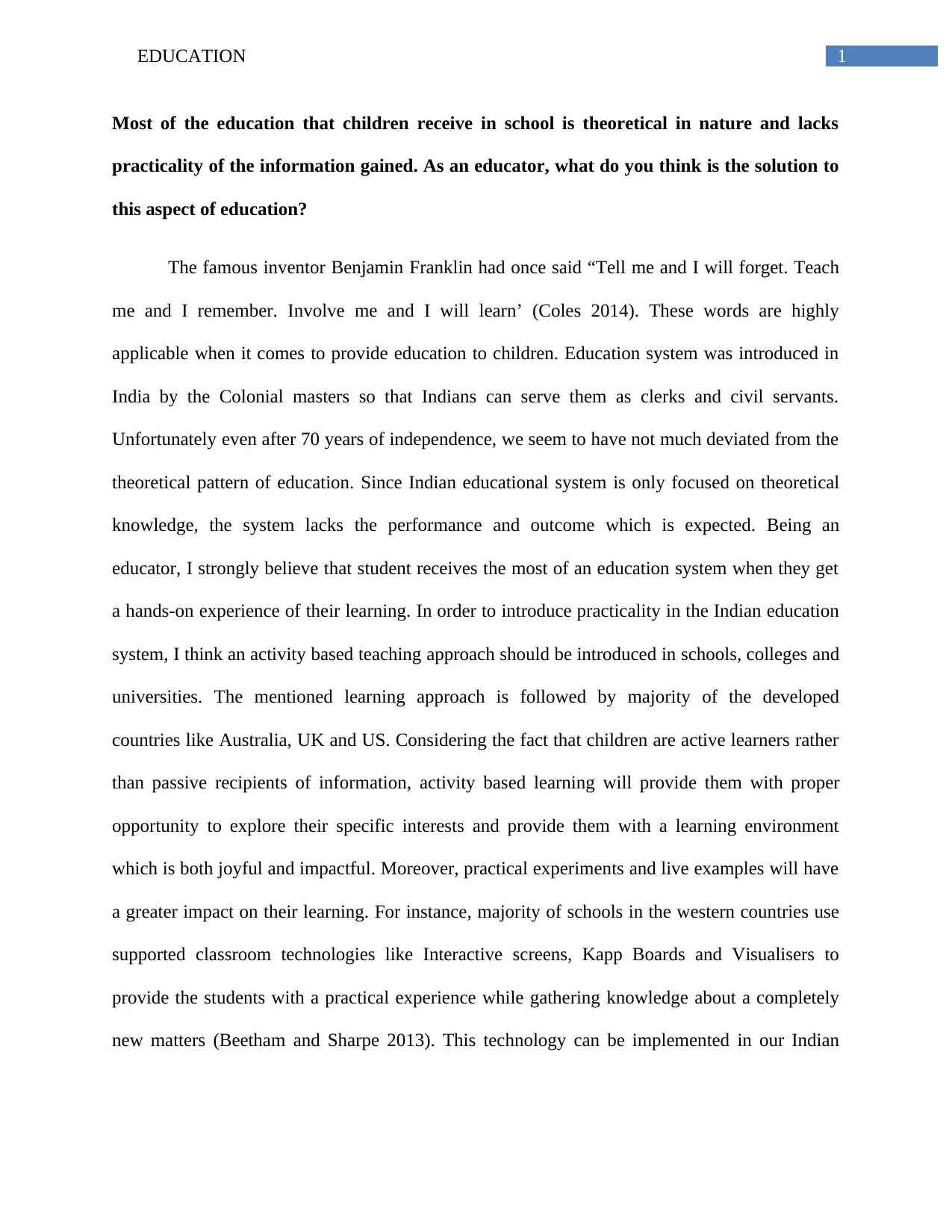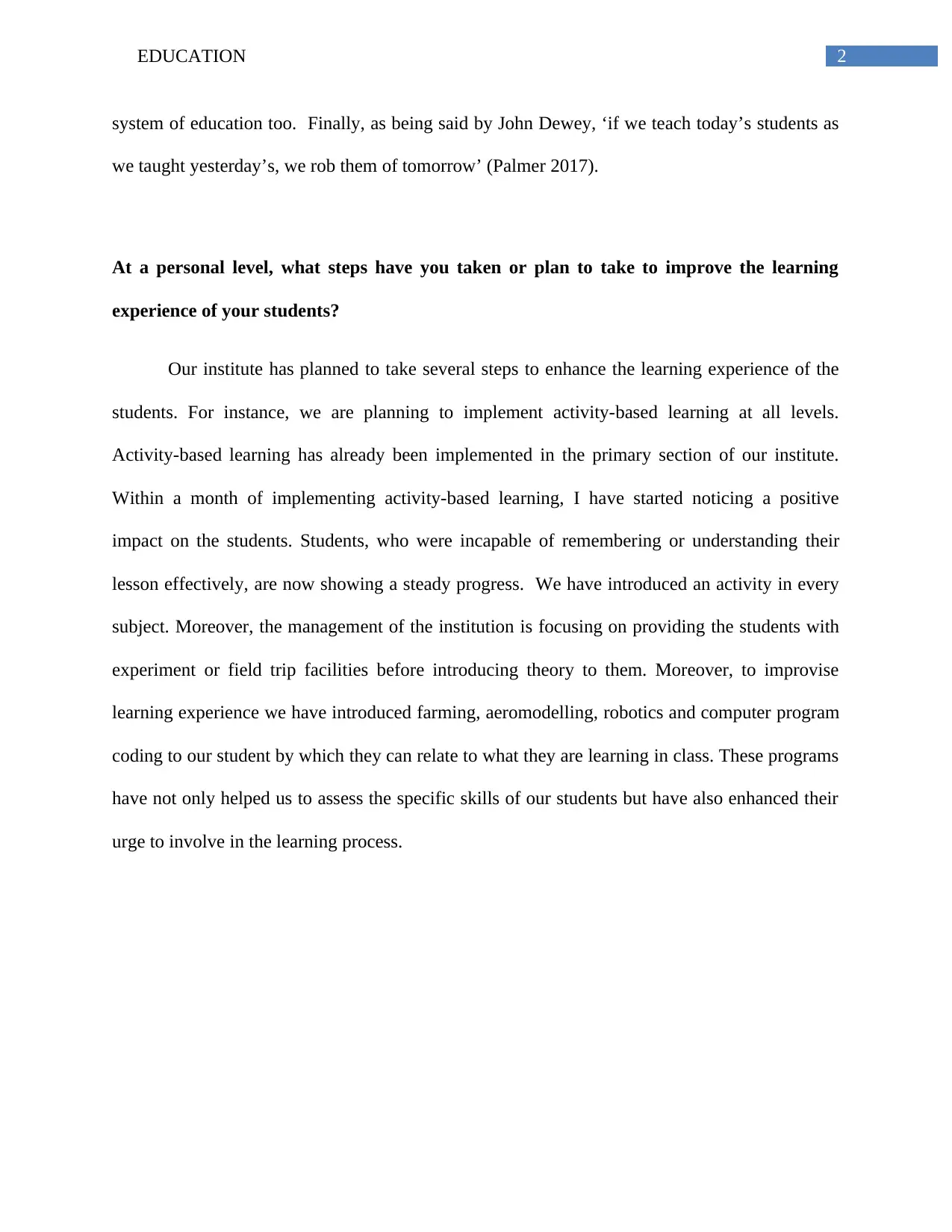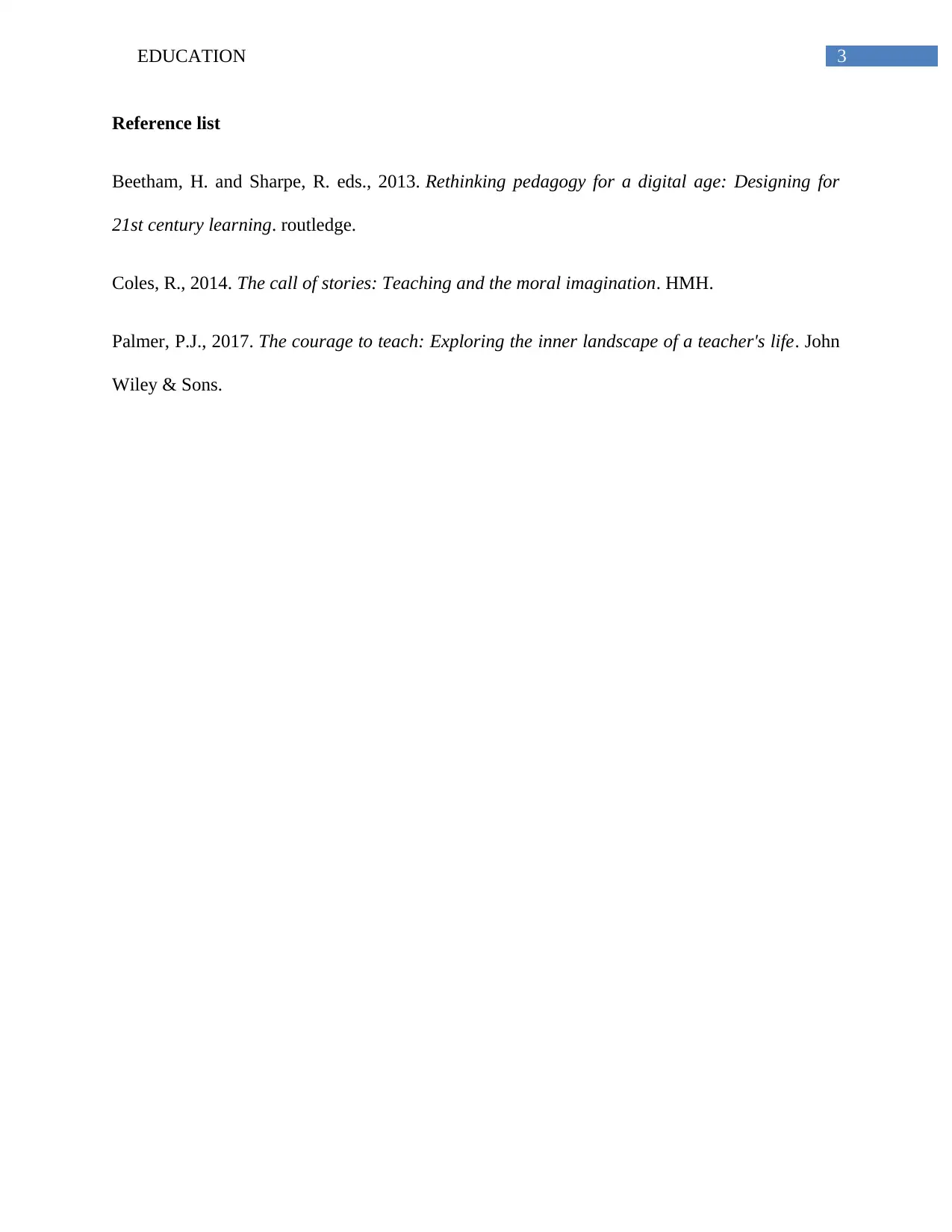Education Reform: Bridging the Gap Between Theory and Practice
VerifiedAdded on 2023/06/11
|4
|675
|436
Essay
AI Summary
This essay explores the imbalance between theoretical knowledge and practical application in the current education system, particularly in India, where the focus remains largely on rote learning. Drawing inspiration from Benjamin Franklin's quote about involvement in learning, the author argues for the integration of activity-based learning approaches, similar to those used in developed countries, to provide students with hands-on experience and foster a more engaging and impactful learning environment. The essay also highlights the importance of incorporating technologies like interactive screens and real-world applications such as farming, aeromodelling, and robotics to enhance student understanding and skill development. The author's institute is actively implementing these changes, including activity-based learning at all levels and providing experiment and field trip opportunities, to create a more effective and enjoyable educational experience for students, aligning with John Dewey's vision of adapting teaching methods to meet the needs of today's learners. Desklib offers a variety of resources including solved assignments and past papers for students seeking academic support.
1 out of 4











![[object Object]](/_next/static/media/star-bottom.7253800d.svg)